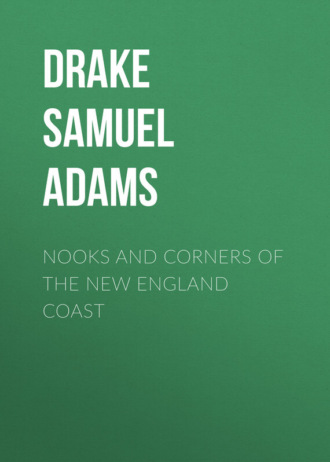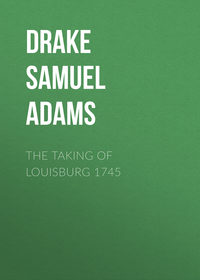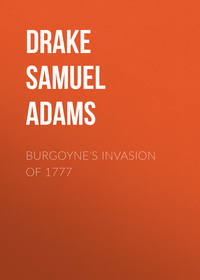 полная версия
полная версияNooks and Corners of the New England Coast
Not a single gun, but a deadly volley, answered the threat. The rocks were bristling with old queen's arms and ducking-guns, in the grasp of a score of resolute fellows. Every shot was well aimed. The barge drifted helplessly out with the tide, and the captain of the frigate had a sorry dispatch for the admiral at Halifax.
Leaving New Harbor, I crossed a by-path that conducted to the factory road. Here and elsewhere I had listened to the story of the destruction of the menhaden, from the fishermen's point of view. They apprehend nothing less than the total disappearance of this fish at no distant day. "What are we poor fellows going to do when they catch up all the porgees?" asked one. The fishery, as conducted by the factories, is regarded by the fishermen proper as the introduction of improved machinery that dispenses with labor is looked upon by the operative. Although the oil factories purchase the catch that is brought in, the owners are considered intruders, and experience many petty vexations. As men of capital, possessed of all needful appliances for their business, they are really independent of the resident population, to whom, on the other hand, they disburse money and give employment. The question with which the political economist will have to deal is the expected extinction of the menhaden.
I went through the factory at Pemaquid Point, and was persuaded the fish could not long support the drain upon them. The porgee begins to frequent these waters in June. The first-comers are lean, and will make only a gallon of oil to the barrel; those of September yield four gallons. A fleet of propellers, as well as sailing-craft of forty to fifty tons burden, are kept constantly employed.
At Pemaquid harbor, the fish cargoes are transferred from the steamer to an elevated tank of the capacity of four thousand barrels. Underneath the tank a tram-way, conducting by an inclined plane to the second story of the factory, is laid upon the wharf. In the bottom of the tank is a trap-door that, upon being opened, quickly fills a car placed below. The fish are then taken into the factory and dumped into other tanks, containing each three car-loads, or about sixty barrels. Here steam is introduced, rapidly converting the fish into unsavory chowder, or "mash." As many as a dozen of these vats were in constant use. The oil and water being drawn off into other vats, the product is obtained through the simplest of machinery, and the well-known principle that in an admixture with water oil will rise to the surface. The residuum from the first process is shoveled into perforated iron cylinders, by men standing up to their knees in the steaming mass. It is then subjected to hydraulic pressure, and, after the extraction of every drop of oil, is carefully housed, to be converted into phosphates. The water is passed from tank to tank until completely free of oil. Nothing is lost.
This factory had a capacity of three thousand barrels per day, though not of the largest class. Others were working day and night through the season, which continues for about three months.
I walked afterward by the side of a seine two hundred fathoms in length, spread upon the grass in order to contract the meshes. One of them frequently costs above a thousand dollars, and is sometimes destroyed at the first casting by being caught on the ledges in shallow water.
An old hand can easily tell the difference between a school of mackerel and one of menhaden. The former rush in a body on the top of the water, while the shoal of porgees merely ripples the surface, as is sometimes seen when a moving body of water impinges against a counter-current. The mackerel takes the hook, while the porgee and herring never do.
The talk was more fishy here than in any place I have visited. Here they call a school, or shoal, "a pod of fish;" "we sot round a pod" being a common expression. The small vessels are called seiners. When they approach a school, the seine is carried out in boats, one end being attached to the vessel, except when a bad sea is running. I have seen the men standing up to the middle among the fish they were hauling in; and they are sometimes obliged to abandon half their draught.
The whole process of rendering menhaden into oil is less offensive to the olfactories than might be supposed. The works at Pemaquid Point are owned by Judson, Tarr, and Co., of Rockport, Massachusetts. As against the generally received opinion that they were destroying fish faster than the losses could be repaired, the unusual abundance of mackerel the last year was cited. Mackerel, however, are not ground up at the rate of many thousand barrels per day. It is easy to conjecture that present profit is more looked to than future scarcity. The product of menhaden is chiefly used in the adulteration of linseed-oil. This fish is probably the same called by the French "gasparot," and found by them in great abundance on the coasts of Acadia.
Some account of the habits of the mackerel, as given by veteran fishermen, is of interest to such as esteem this valuable fish – and the number is legion – if not in explanation of the seemingly purposeless drifting of the mackerel fleet along shore, which is, nevertheless, guided by calculation.
In early spring the old breeding fish come into the bays and rivers to spawn. They then return northward. These mackerel are not apt to take the hook, but are caught in weirs and seines, a practice tending to inevitable scarcity in the future. The parent fish come back, in September, to the localities where they have spawned, and, taking their young in charge, proceed to the warmer waters west and south. Few if any mackerel spawn south of Cape Cod.
By the time this migration occurs, the young fish have grown to six or seven inches in length, and are called "tinkers." They frequently take the bait with avidity, but are too small for market. When this school comes along, the fishermen prepare to follow, saying, "The mackerel are bound west, and we must work west with them." These first-comers are usually followed by a second school of better size and quality. I have often seen numbers of young mackerel, of three to four inches in length, left in shallow pools upon the flats by the tide in midsummer.
In the midst of a "biting school" no sport could be more exciting or satisfying. At such times the mackerel resemble famished wolves, snapping and crowding for the bait, rather than harmless fishes. This unexampled voracity makes them an easy prey, and they are taken as fast as the line can be thrown over. It not unfrequently happens that the school will either sink or suddenly refuse the bait, even while swarming about the sides of the vessels. This is vexatious, but there is no help for it. The fleet must lie idle until the capricious or overfed fish is hungry.
Mackerel swim in deep water, and are brought to the surface by casting over quantities of ground bait. If they happen to be on the surface in a storm, at the first peal of thunder they will sink to the bottom. The movements of the fish in the water are like a gleam of light, and it dies hard when out of it. The mackerel was in great abundance when New England was first visited.
In the confusion naturally incident to accounts of early discoveries on our coast of New England, it is pleasant to find one vantage-ground from which you can not be dislodged. In this respect Pemaquid stands almost alone. It has never been called by any other name. Possibly it may have embraced either more or less of the surrounding territory or adjacent waters than at present; still there is eminent satisfaction in standing at Pemaquid on impregnable ground.
In the minds of some old writers Pemaquid was unquestionably confounded with the Penobscot. There is a description of Pemaquid River from the Hakluyt papers,46 which makes it the easternmost river, one excepted, of Mavoshen, manifestly a name erroneously applied, as the description is as far from coinciding with the true Pemaquid as is its location by Hakluyt. In this account the Sagadahoc and town of Kennebec are also mentioned. Like many others, it is more curious than instructive.
It also appears, to the student's dismay, that in some instances the discoverers were apprehensive of drawing attention to any new-found port or harbor, as it would render their monopoly of less value. The account of Weymouth's voyage by James Rosier omitted the latitude, doubtless with this object. His narrative, if not written to mislead, was confessedly not intended to instruct. How is the historian to follow such a clue? Fortunately, after many puzzling and unsatisfactory conjectures, the account of William Strachey makes all clear, so far as Pemaquid is in question. Weymouth's first landfall was in 42°, and he coasted northward to 44°. Strachey speaks of "the isles and rivers, together with that little one of Pemaquid."
Sir F. Gorges, in his "Brief Narration," mentions that "it pleased God" to bring Captain Weymouth, on his return in 1605, into the harbor of Plymouth, where he, Sir Ferdinando, then commanded.47 Captain Weymouth, he continues, had been dispatched by the Lord Arundel of Wardour in search of the North-west Passage, but falling short of his course, had happened into a river on the coast of America called Pemaquid. In the reprint of Sir F. Gorges's invaluable narrative48 the word Penobscot is placed after Pemaquid in brackets. It does not appear in the original.
Pemaquid, then, becomes one of the pivotal points of New England discovery, as it subsequently was of her history. As the French had directed their early efforts toward the Penobscot, so the English had imbibed strong predilections for the Sagadahoc, or Kennebec. Weymouth and Pring had paved the way; the Indians transported to England had been able to give an intelligible account of the country, the configuration of the coasts, the magnitude of the rivers, and power of the nations peopling the banks.
The Kennebec was known to the French earlier than to the English, and by its proper name. Champlain's voyage in the autumn of 1604 extended, it is believed, as far as Monhegan, as he names an isle ten leagues from "Quinebequi" and says he went three or four leagues beyond it. Moreover, he had coasted both shores of the Penobscot bay, penetrating at least as far as the Narrows, below Bucksport. He calls the Camden hills Bedabedec, and says the Kennebec and Penobscot Indians were at enmity. De Monts followed Champlain in June, 1605, having sailed from St. Croix two days after Weymouth's departure from the coast for England. He was more than two months in exploring a hundred and twenty leagues of sea-coast, visiting and observing the Kennebec, of which a straightforward story is told. Even then the river was known as a thoroughfare to Canada.49
The mouth of the Kennebec is interesting as the scene of the third attempt to obtain a foothold on New England's soil. This was the colony of Chief-justice Popham, which arrived off Monhegan in August, 1607.50 This undertaking was intended to be permanent. There were two well-provided ships, and a hundred and twenty colonists.51 The leader of the enterprise, George Popham, was accompanied by Captain Raleigh Gilbert, nephew and namesake of Sir Walter Raleigh.
A settlement was effected on Hunnewell's Point, at the mouth of the Kennebec. The winter was one of unexampled severity, and the new-comers had been late in preparing for it. Encountering privations similar to those afterward endured by the Plymouth settlers, they lost courage, and when news of the death of their patron, the chief-justice, reached them, were ready to abandon the project. Popham, having died in February, was succeeded by Gilbert, whose affairs recalling him to England, the whole colony deserted their settlement at Fort St. George in the spring of 1608. Popham was the first English magistrate in New England.
Mather attributes the failure of attempts to colonize the parts of New England north of Plymouth to their being founded upon the advancement of worldly interests. "A constant series of disasters has confounded them," avers the witch-hating old divine. One minister, he says, was exhorting the eastern settlers to be more religious, putting the case to them much in this way, when a voice from the congregation cried out, "Sir, you are mistaken; you think you are preaching to the people of the Bay. Our main end was to catch fish."
"Did you ever see Cotton Mather's 'History of New England?' – one of the oddest books I ever perused, but deeply interesting." The question is put by Southey, and I repeat it, as, if you have not read Mather's "Magnalia Christi Americana," you have not seen the corner-stone of New England historical and ecclesiastical literature.
Apropos of the immigration into New England, it was openly bruited in England that King Charles I. would have been glad if the thousands who went over were drowned in the sea. Between the years 1628 and 1635 the exodus was very great, and gave the king much displeasure. No one was permitted to remove without the royal permission. Even young Harry Vane had to solicit the good offices of his father, Sir Harry, to obtain a pass. He was then out of favor at court and at home, through his Geneva notions about kneeling to receive the Sacrament, and other Puritan ideas. "Let him go," growls an old writer; "has not Sir Harry other sons but him?"
The colony of Popham began better than it ended. A fort, doubtless no more than a palisade with platforms for guns, was marked out. A trench was dug about it, and twelve pieces of ordnance were mounted. Within its protection fifty houses, besides a church and store-house, were built. The carpenters framed a "prytty pynnace" of thirty tons, which they christened the Virginia. There is no earlier record of ship-building in Maine.
The tenacity of the English character has become proverbial. Nevertheless, the opinion is hazarded that no nation so ill accommodates itself to a new country. The English colonies of Virginia, New England, and Jamaica are striking examples of barrenness of resource when confronted with unforeseen privations. The Frenchman, on the contrary, possesses in an eminent degree the capacity to adapt himself to strange scenes and unaccustomed modes of life. Every thing is made to contribute to his wants. Let the reader consult, if he will, the campaign of the Crimea, where thousands of English soldiers gave way to hardships unknown in the French camps. The elastic gayety of the one is in contrast with the gloomy despondency of the other. The Popham colony abandoned a well-matured, ably-seconded design through dread of a New England winter and through homesickness. Clearly it was not of the stuff to found a State.
The previous winter was passed by the French at their new settlement of Port Royal, commenced within two years. The seasons of 1605 and of 1606 were extremely rigorous. The colony of De Monts went through the first in rude cabins, hastily constructed, on the island of St. Croix. The next autumn the settlement was transferred to Port Royal. Winter found them domiciled in their new quarters under no better roofs than they had quitted. Though their leader, Du Guast, had left them, they were animated by an irrepressible spirit of fun, altogether French. They made roads through the forest, or joined with the Indians in hunting-parties, managing these native Americans with an address that won their confidence and good help.
Finally, at the suggestion of Champlain, in order to keep up an unflagging good-fellowship, and to render themselves free of all anxiety on the subject of provisions, the ever-famous "L'Ordre de Bon Temps" was inaugurated. It is deserving of remembrance along with the coterie of the Knights of the Round Table.
Once in fifteen days each member of the order officiated as maitre d'hotel of De Poutrincourt's table. It was his care on that day that his comrades should be well and honorably entertained; and although, as the old chronicler quaintly says, "our gourmands often reminded us that we were not in the Rue aux Ours at Paris, yet so well was the rule observed that we ordinarily made as good cheer as we should have known how to do in the Rue aux Ours, and at less cost."
There was not a fellow of the order who, two days before his turn came, did not absent himself until he could return with some delicacy to add to their ordinary fare. They had always fish or flesh at breakfast, and were never without one or both at the repasts of noon and evening. It became their great festival.
The steward, or maitre d'hotel, having caused all things to be made ready, marched with his napkin on his shoulder, his staff of office in his hand, and the collar of the order, that we are told was worth more than four French crowns, about his neck. Behind him walked the brothers of the order, each one bearing his plate. In the evening, after giving thanks to God, the host of the day resigned the collar to his successor, each pledging the other in a glass of wine.
On such occasions they had always twenty or thirty savages – men, women, and children – looking on. To these they gave bread from the table; but when, as was often the case, the sagamores – those fierce, intractable barbarians – presented themselves, they were, says Lescarbot, "at table eating and drinking like us, and we right glad to see them, as, on the contrary, their absence would have made us sorry."
At Pemaquid we enter the domain of Samoset, that chivalric New Englander whom historians delight to honor. He was a sagamore without guile. Chronologically speaking, he should first appear at Plymouth, in the act of offering to those doubting Pilgrims the right hand of fellowship. He told them he was sagamore of Morattigon, distant from Plymouth "a daye's sayle with a great wind, and five dayes by land." In 1623 he extended a kindly reception to Christopher Levett, to whom he proffered a friendship, to continue until the Great Spirit carried them to his wigwam. All the old writers speak well of Samoset, whom we call a savage.52
I next visited the little point of land on which are the ruins of old Fort Frederick. Little difficulty is experienced in retracing the exterior and interior lines of a fortress designed as the strongest bulwark of English power in New England. It was built upon a green slope, above a rocky shore, commanding the approach from the sea; but was itself dominated by the heights of the western shore of John's River, a circumstance that did not escape the notice of D'Iberville in 1696. At the south-east angle of the work is a high rock, overgrown with a tangle of climbing vines and shrubs. This rock formed a part of the old magazine, and is now the conspicuous feature of the ruined fortress. A projecting spur of the opposite shore was called "the Barbican."
The importance of Pemaquid as a check to French aggression was very great. It covered the approaches to the Kennebec, the Sheepscot, Damariscotta, and Pemaquid rivers. It was also, being at their doors, a standing menace against the Indian allies of the French, with a garrison ready to launch upon their villages, or intercept the advance of war-parties toward the New England settlements. Its presence exasperated the Abenaquis, on whose territory it was, beyond measure: the French found them ever ready to second projects for its destruction.
On the other hand, the remoteness of Pemaquid rendered it impracticable to relieve it when once invested by an enemy. Only a few feeble settlements skirted the sea-coast between it and Casco Bay, so the same causes combined to render it both weak and formidable. Old Pentagoët, which the reader knows for Castine, and Pemaquid, were the mailed hands of each nationality, always clenched ready to strike.
The fort erected at Pemaquid in 1677, by Governor Andros, was a wooden redoubt mounting two guns, with an outwork having two bastions, in each of which were two great guns, and another at the gate.53 This work was named Fort Charles. It was captured and destroyed by the Indians in 1689.
Sir William Phips, under instructions from Whitehall, built a new fort at Pemaquid in 1692, which he called William Henry. Captains Wing and Bancroft were the engineers, the work being completed by Captain March.54 The English believed it impregnable. Mather, who says it was the finest that had been seen in those parts of America, has a significant allusion to the architect of a fortress in Poland whose eyes were put out lest he should build another such. From this vantage-ground the English, for the fifth time, obtained possession of Acadia.
In the same year D'Iberville made a demonstration against it with two French frigates, but finding an English vessel anchored under the walls, abandoned his design, to the chagrin of a large band of auxiliary warriors who had assembled under Villebon, and who now vented their displeasure by stamping upon the ground.
The reduction of Fort William Henry was part of a general scheme to overrun and destroy the English settlements as far as the Piscataqua. The English were fore-warned. John Nelson, of Boston, whose biography is worth the writing, was then a prisoner at Quebec. Madocawando was also there, in consultation with Count Frontenac. The Abenaqui chief, dissatisfied with his presents, gave open expression of his disgust at the niggardliness of his white ally. Nelson was well acquainted with the Indian tongue. He cajoled the chief into talking of his projects, and as soon as they were in his possession acted like a man of decision. He bribed two Frenchmen – Arnaud du Vignon and Francis Albert – to carry the intelligence to Boston. On their return to Canada both were shot, and Nelson was sent to France, where he became for five years an inmate of the Bastile.
The life of John Nelson contains all the requisites of romance. Although an Episcopalian, he put himself at the head of the revolution against the tyranny of Andros. As a prisoner, he risked his own life to acquaint his countrymen with the dangers that menaced them; and it is said he was even carried to the place of execution along with his detected messengers. The French called him "le plus audacieux et le plus acharné," in the design of conquering Canada. Released from the Bastile on his parole, after visiting England he returned to France to fulfill its conditions, although forbidden to do so by King William. A man of address, courage, and high sense of honor was this John Nelson.
In 1696, a second and more successful expedition was conducted against Pemaquid. In August, D'Iberville55 and Bonaventure sailed with the royal order to attack and reduce it. They called at Pentagoët, receiving there a re-enforcement of two hundred Indians, who embarked in their canoes, led by St. Castin. On the 13th the expedition appeared before the place, and the next day it was invested.
Fort William Henry was then commanded by Captain Pascho Chubb, with a garrison of about a hundred men. Fifteen pieces of artillery were in position. The French expected an obstinate resistance, as the place was well able to withstand a siege.
Chubb, on being summoned, returned a defiant answer. D'Iberville then began to erect his batteries. The account of Charlevoix states that the French got possession of ten or twelve stone houses, forming a street leading from the village square to the fort. They then intrenched themselves, partly at the cellar-door of the house next the fort, and partly behind a rock on the sea-shore. A second demand made by St. Castin, accompanied by the threat that if the place were assaulted the garrison might expect no quarter, decided the valiant Chubb, after a feeble and inglorious defense, to surrender. The gates were opened to the besiegers.
On finding an Indian in irons in the fortress, Castin's warriors began a massacre of the prisoners, which was arrested by their removal, at command of D'Iberville, to an island, where they were protected by a strong guard from further violence. The name of William Henry has been synonymous with disaster to colonial strongholds. The massacre of 1757 at Lake George, forever infamous, obscures with blood the fair fame of Montcalm. The novelist Cooper, in making it the groundwork of his "Mohicans," has not overstated the horrors of the tragedy enacted by the placid St. Sacrament.
Two days were occupied by the French in the destruction of Pemaquid fort. They then set sail for St. John's River, narrowly escaping capture by a fleet sent from Boston in pursuit. The French, who had before claimed to the Kennebec, subsequently established their boundary of Acadia at St. George's River.











